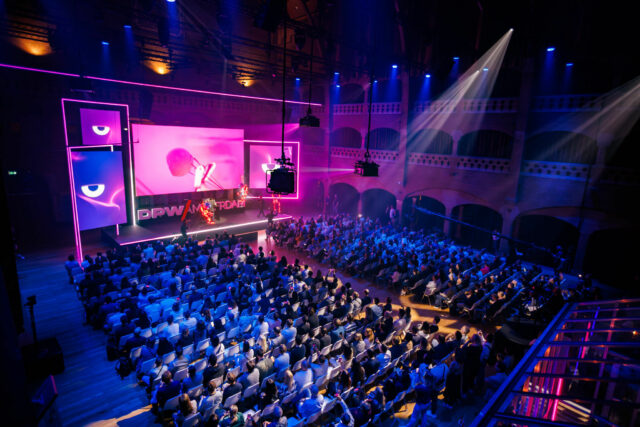COVID-19 affected everyone in different ways.
It caused death, illness, chaos and disruption the world over. It shut down airports, overwhelmed the NHS and left our streets empty. With March 2024 marking four years since the UK announced its first national lockdown, how ready would procurement and our supply chains be in the event of a similar scale this time around?
To go forward, unfortunately, we must look at the chain of events last time around.
Having been declared a global pandemic on 12th March 2020 and with cases of coronavirus accelerating to uncontrollable levels, many businesses’ supply chains collapsed. When the pandemic hit, businesses were left footing the bill for billions of pounds worth of unsold goods, causing inventory-to-sales ratios to rise high.
As a result of lockdowns, organisations were left with no choice but to cut their activity or shut down entirely for a brief period as guidance continued to change at little to no notice. As such, production was halted in factories across the world causing mass layoffs and redundancies across the majority of industries, particularly in manufacturing and logistics, resulting in a reduction in shipping which affected delivery times globally.
Consumer demands also shifted significantly. The demand for personal protective equipment (PPE) as well as the likes of toilet paper and pasta rose dramatically. There was an increase in office furniture amid a surge in demand in remote working. This, alongside the likes of government help such as furlough, helped enable a surge in demand for e-commerce as consumers bought online in record numbers. The shift in demand for goods led to a reduction in experiences such as attending events, eating at restaurants or going out to pubs.
In order to meet this increase in demand, factories pumped out goods quicker than ports could handle them. US ports were full of exports from Asia with too small of a workforce to unload them and too few truck drivers to transport the goods. While ports were full, compounding the issue was a labour shortage, especially truck drivers. And talent remains a concern to this day to procurement and supply chain.
But COVID-19 is only one of procurement’s fires. There’s been the Suez Canal disaster, wars in Ukraine and Israel and inflation concerns to contend with too.
So if the worst were to happen and another ‘black swan’ event was to take place, what lessons has procurement learned?

As a result of the generative AI boom, Jack Macfarlane, Founder and CEO, DeepStream, believes that the industry is in a much stronger position to overcome a future pandemic. “It proved that procurement needed to brush up on its ability to adjust to black swan events swiftly by investing in the right technology and training for the industry to respond to sudden challenges and changes,” explains Macfarlane. “With the growing use of generative AI, the industry is now in a much stronger position to contend with a future pandemic. Generative AI can scrape vast datasets regarding global trends, using the data to predict shortages, price fluctuations and supplier risks before they happen.
“Regardless of the industry you’re in, procurement leaders should always focus on ensuring the right policies are in place to prevent declining quality control in a future black swan event.”

Omer Abdullah, Co-Founder and Chief Commercial Officer at The Smart Cube, agrees that procurement finds itself in a more secure place than that of four years ago. “Procurement is undoubtedly readier than it was prior to the COVID-19 pandemic. CPOs and their teams have learned where potential value drivers are, and they also understand supplier relationships and supply chain intricacies more intimately,” he reveals. “Procurement has also moved further along the digital spectrum. Organisations have tools at their disposal to operate effectively, and on a dispersed basis, should a similar event take place. Additionally, there are now far more risk management solutions in place versus before the pandemic – allowing practitioners to identify problems, and potentially risky situations, before they arise. Add to this more diversified supply chains and established alternative sources for essential categories, and the function is far more prepared than pre-2020.”
However, Abdullah went on to explain that while “no one would be absolutely ready for another unexpected pandemic”, he insists the industry did learn lessons from COVID-19. “It must be noted that there’s still a recency effect at play – procurement professionals tangibly remember the pandemic’s impact,” he explains. “As time progresses, though, this may change but for now, the industry knows how to operate if a comparable scenario were to unfold soon.”

Bindiya Vakil, CEO and founder of Resilinc, believes the pandemic has showcased how better prepared companies are for the next global disruption. “Fortunately, the COVID-19 pandemic taught businesses some valuable lessons. Not nearly as many companies are flying blind in the face of disruption,” explains Vakil. “Many organisations learned that having visibility into their entire supplier network is the foundation for mitigating disruptions. Mapping their supply chain down to the part-site level and then using AI-powered technology to monitor it 24/7 for potential threats gives procurement leaders an early-warning system with actionable insights to make mitigation plans within hours.”

While Vel Dhinagaravel, CEO and President Beroe Inc, reveals that COVID-19 “took the mask off” procurement and exposed the true character of teams. “Some were much more partnership-oriented and some a lot less. Some of these memories endure and will either help or handicap their responses to future disruptive events,” Dhinagaravel reveals. “During 2020-2022 as different countries and regions were in varied states of lockdown there were tremendous constraints on supply chains. As a result, procurement got an opportunity to be part of discussions around product mix optimisation and product pricing which previously had been largely off limits to them.”
He adds that while the future is uncertain, he believes the function is in a healthier position to thrive should the worst happen again. “Post-pandemic, these relationships have endured, and we have also seen these teams consciously building agility and resilience into their operating models and supply chain,” he discusses. “They’ve been using data and analytics as key levers to get visibility of their supply chain and suppliers – identifying points of failure, assessing scenarios, and proactively running simulations to develop diversification strategies. While these actions don’t give procurement a crystal ball to predict the next disruptive event, it puts them in a much better position to be able to handle another pandemic or major supply chain shock.”

And Betsy Pancik, Senior Vice President at Proxima, says that the pandemic was procurement’s “time to shine” with business leaders recognising the importance of a robust procurement function to keep business running smoothly. “COVID-19 caused major supply shortages, which drove price surges and quality issues – many procurement teams had to quickly mobilise capability and capacity to support immediate business needs,” she explains.
“Some companies learned this the hard way by not having the right processes and teams in place, which led to insufficient inventory, spend increases, and strained supplier relationships. Many companies realised the need for alternative suppliers to prevent these issues in the future and started proactively seeking additional sources of supply. Others realised the need for emergency buying procedures, systems, and processes that enable quick action, automated buying, supply chain visibility, and investment in talent – all of which will help businesses respond in a more organised and robust way if a similar situation were to happen again.”
In truth, procurement teams learned a lot from the events of March 2020. Procurement and supply chains can’t be complacent. The function can’t afford to let the mistakes of the past define its future. Supply chains must have alternative methods of supply and Chief Procurement Officers must be agile and ready to respond. Procurement can’t drop the ball and must stay ready.











